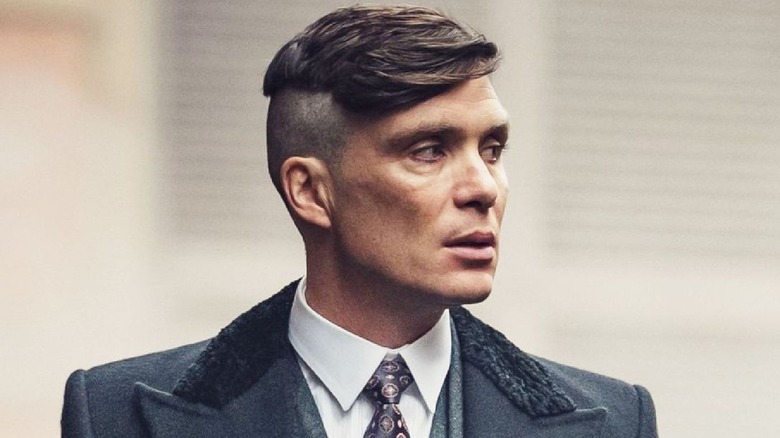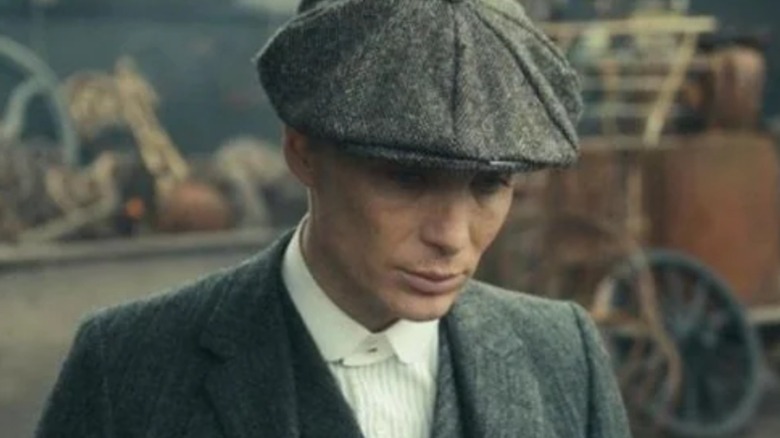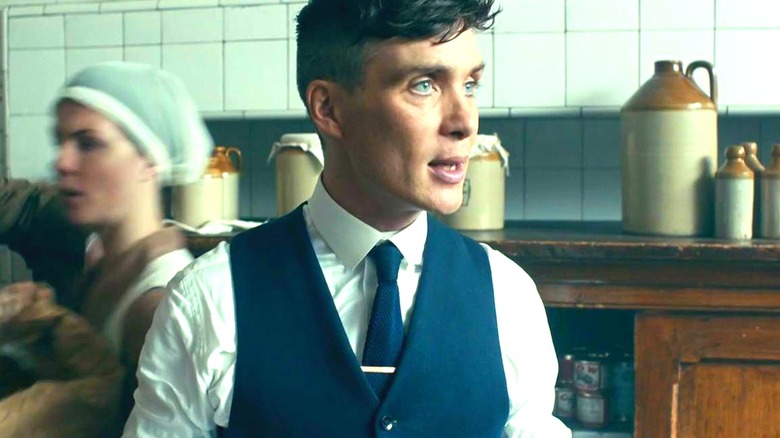Who Were The Peaky Blinders In Real Life?
Set in the immediate aftermath of World War I, "Peaky Blinders" is a captivating period crime drama about a Birmingham-based British street gang and crime family of Romani and Irish Traveller lineage under the leadership of boss Tommy Shelby (Cillian Murphy). He has his work cut out for him when Winston Churchill (Andy Nyman and Richard McCabe) sends Detective Chief Inspector Major Chester Campbell (Sam Neill) to get the city under control, but that doesn't stop him from expanding his operations throughout the 1920s.
Much like the crew in the series, the real Peaky Blinders were a violent street gang that terrorized the slums of Birmingham for several decades around the turn of the 20th century, running rampant from about the 1880s through the end of the 1920s. The industrial revolution ushered in a period of spiking poverty toward the end of the 19th and beginning of the 20th centuries in England, and Birmingham got some of the worst of it. This led to a major uptick in crime, leading to a tapestry of street violence that included the Peaky Blinders street gang. However, that's pretty much where the likeness ends, given that Tommy Shelby wasn't real and the gang was not remotely as organized as it's made out to be in the popular series.
The razor blade hats are most likely a myth
Although the plot point mostly features into the show's first season, the gang at the heart of "Peaky Blinders" derives its name from their characteristic flat caps, which contain hidden razor blades that help them inflict mayhem on their enemies. Although this makes for pretty intriguing television, experts say there's no real reason to believe this actually happened.
Experts say the tale represents what's known as "folk etymology." This is a type of misconstrued etymology wherein a seemingly logical origin for a word or phrase is assigned based on users' modern understanding of language — like the way the origin of "hangnail" was a word that had nothing to do with nails and the etymology of "muskrat" has nothing to do with rats.
The real Peaky Blinders did have a penchant for sharp-looking hats, part of their general culture of wearing stylish garb. Much like gang members today, they donned their finery as a symbol of their status within their community. However, the real Blinders wore a style of bowler hat called a "billycock," and experts say there's no reason to believe razor blades were part of the uniform. The fact that razor blades were still something of a novel luxury item at the time the working class gang was running wild helps serve to discredit this theory.
It was more of a subculture than a street gang
While the BBC's Peaky Blinders were part of a Romani-Irish Traveller family crime gang, their real-life counterparts were much less organized. Instead, they were more of a subculture of wild youths who shared a mutual appreciation for crime and violence as a means of dealing with their otherwise tough existence in Birmingham.
As evidenced by many political cartoons from the period, working class and impoverished people in Birmingham toward the end of the Victorian era often struggled to maintain a basic standard of living, with many forced into workhouses or onto the streets. The Birmingham slums were a dangerous place, and many members of the city's criminal element made their living by pickpocketing or outright theft.
Youth gang culture soon became rampant, and the roving bands of disenfranchised young men — ranging in age from about 12 to 30 – eventually began to form semi-organized hierarchies. Although nothing like the scale of what is depicted in "Peaky Blinders," prominent and powerful members did emerge from time to time to help them take up turf wars with other rival gangs like the Birmingham Boys, who eventually superceded the Blinders as Birmingham's most powerful street gang.


